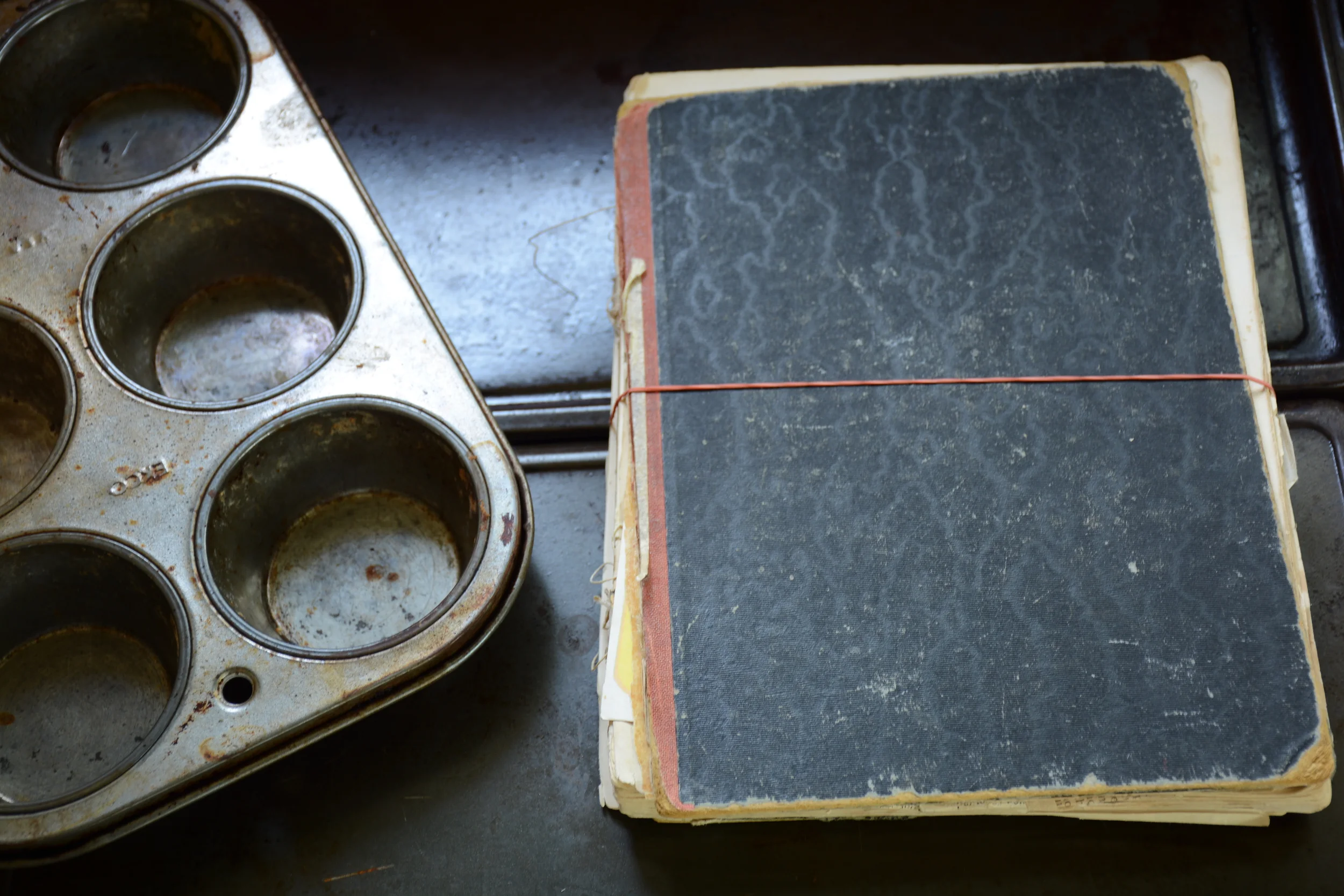Grandma Betty's Recipe Book
/Grandma Betty's recipe book
My husband and I just returned from 10 days in North Devon. We went with his mom to see her 98 year old mother and of course, my husband's grandmother. A word about Betty before we get to her cookbook. She is as I mentioned 98 years old and she still lives on her own. She has fantastic neighbours who drop in on her daily. They pick up groceries she may need, make her a quiche now and again and visit with her on a regular occasion. But - Gran still makes most of her meals, she knits afghans, for as she puts it "old people in the home" and she does the crossword every day. She is still extremely sharp if somewhat forgetful.
One day on our trip, we were sitting in Gran's conservatory enjoying the sunshine and the gorgeous view of the Moors from the back of her house when my husband brought out a book that looked like it had seen some action. The spine was cracked as if the book had been opened and closed more times than it could count. He had a curious smile on his face as he was looking at me and I immediately knew that what was inside, would be of immense interest to me.
It was Gran's recipe book and the first recipes inside of it were dated from November, 1938. I sat on my hands and waited patiently as James flipped through the pages on the other side of the room. He read things out like "Cheese Scones, Sweet Orange Marmalade, Red Tomato Chutney and Dried Apricot Jam". I could barely take it.
Finally, he handed it over to me. The book felt so well loved and so fragile in my hands. There were pages that were completely loose from the binding. As I flipped through the pages, I could tell the recipes that were the most popular from the splatters on the pages.
As I was exclaiming about some of the recipes, Gran said these magical words "Why don't you take it home with you?". WHAT??? I couldn't believe it. I got rather choked up at the thought. I wanted it more than I could express, but would never have asked for it.
I continued to flip through the pages and there at the very back was a record from 1941 - 1997 of how many pounds of Seville Oranges Gran had turned into marmalade each year.
Over this summer, I am going to ask friends to join me in making some of the recipes from the book and will post our successes and failures with the recipes here. I already have my first friend chosen and can't wait to choose which recipe we will attempt together!








